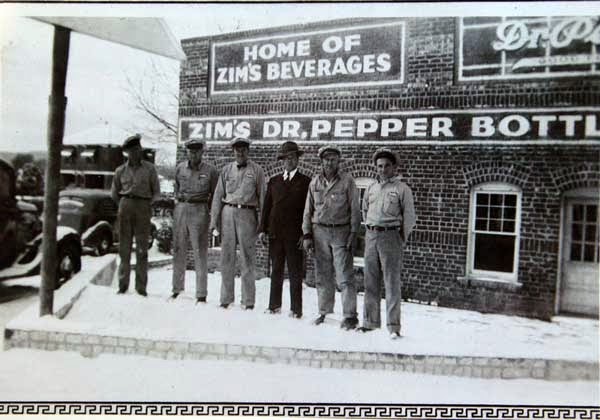Backyard Burials Have Stopped,
The Mysterious Cause Remains
By Jeff Clark
Albert Whitehead buried people in
his back yard. There, I said it. Before you phone the sheriff, please know that
the last spade full of dirt was tamped into place back in 1960. Appropriately, this
last burial was Albert himself. At least 17 graves preceded his, behind that wood-framed
Whitehead house.
Where
the garden should’ve been.
Mr.
Whitehead was a good guy, a pillar of the Thurber community. His house sat on a
street among many other houses, roughly east, north-east of where New York Hill
Restaurant sits today. In the vernacular of the day, he was “colored”.

I
can’t imagine that his neighbors back then didn’t know what was going on. Back
behind the house.
Albert
Whitehead towered above folks at six foot four, a large booming voice and a
“hearty laugh” to match. One imagines a twinkle in his eye, a joke just told,
in the photographs I’ve seen of this gentleman.
Mr.
Whitehead was a little boy during the Civil War. He died at 98 years of age,
four years before LBJ’s civil rights legislation was signed into law. He never
heard Dr. King’s “I Have a Dream” speech.
Didn’t
sound like he needed to.
I like Albert. He had five wives. A real
contender. He may have had two at once, near the end. He didn’t care what folks
thought. He married his last known wife Liza when he was 84. Hope springs
eternal. Liza was the daughter of his fourth wife Belle (Liza conceived by
another man). Albert outlived all of his wives, though he produced no surviving
offspring.
Albert
was well liked in Thurber, Grant Town, Thurber Junction and Mingus. Said to be
the son of slaves, the story was told that Albert walked the 60 miles to
Thurber from Fort Worth ,
looking for work in the winter of 1903. He’d just completed a railroad
construction job. Why he didn’t take the train is not known. The T & P Coal
Co. imported many of its workers of whatever color to Thurber by train.
Toward
the end of Albert’s foot-bound journey, he navigated by following the black
coal-fired smoke clouds that consumed that coal mining boomtown’s sky. When he
topped the Gordon Cutoff hill, he saw Thurber’s brick plant, power house, town
square and many neatly-tended rows of red and green miner’s homes. They say
that the hope of a fresh start fired his imagination and fueled his steps.
Albert’s house, Number 265, was just
north of the black chain link fenced cemetery, unlabeled at the back of the
puzzlingly-named W. K. Gordon Museum of Industrial History. If you’ve visited
the turquoise-colored miner’s house down the slope from New York Hill, that’s likely
what Albert’s home looked like. His house was near the west end of the Thurber
Brick Yard. If you look at the large Whitehead
Cemetery
By 1936, most everything was gone
from Thurber, but the T & P allowed Albert to stay, 74 years old and
nowhere else to go. Albert worked a gray Jenny mule around the Thurber
Junction/Mingus area about 1950, the last remembered working mule in those
parts. Albert plowed gardens for local residents and did other odd jobs.
Saturdays
this man would hitch his mule to his wagon and drive with his wife Liza two
miles north to Thurber Junction/Mingus for supplies. He visited his white
friends and was known to enjoy a few quarts of beer. Sometimes a second black
woman rode with the couple, giving rise to the rumor that Albert was now
marrying two-at-a-time. The story was that Wife Number Two had run her husband
off and moved in with Albert and Liza. Miss Liza would ride up front with
Albert on the wagon seat, while his backup bride rode behind, her legs dangling
off the rear end of his wagon.
Albert’s Thurber house burned around
1955, so the Whiteheads moved to Stephenville. Liza died two years later and
was buried behind where their house used to be. Three years after that, Albert
passed away.
If you scan historical documents,
then examine the site itself, it appears that five male adults, seven female
adults, four male children and one male infant are at rest there. The only
marked graves are Liza Whitehead (1875-1957), Albert Whitehead (1862 – 1960)
and Henryetta Halversen (April 9, 1862 – August 29, 19 36). Henryetta could have been a
wife, mother-in-law or friend.
These
three names are recorded on steel funeral home nameplates. There are no marble
tombstones, nor any sign announcing this site as a cemetery. Oral history suggests
that the unknowns could be Mr. & Mrs. Ed Jackson and John Bennett. It has
been suggested that some of Albert’s wives may be buried here. One of the male
children (stillborn) is thought to be Albert’s son (Nathan Griffin?).
Why did Albert not take these people
to the black section of the company-owned Thurber Cemetery
The
ground in the black section of Thurber
Cemetery
There’s a story that the road to the
black section of Thurber
Cemetery Thurber Cemetery
When Thurber was winding down,
Albert remained behind as a caretaker for the few buildings and houses that
were not torn down or moved. When Texas & Pacific brass traveled out from
Cowtown to hunt and fish, Mr. Whitehead served as their guide.
The Whitehead Cemetery
Roland McMinn, a local historian and
brick collector from Mineral Wells was exploring around the old Thurber Brick
Yard around 1986 when he happened upon the little cemetery. After showing some
friends his discovery, the site was cleaned and a fence was built. At the time,
only seven graves were visible. There is no way to know the first burial date,
though it’s thought to be after 1903, when Albert moved in.
Few hard and fast answers concerning
the Whitehead Cemetery
Special
thanks to Leo S. Bielinski, Ph. D. Jeff may be reached at
jeffclarktexas@gmail.com..

No comments:
Post a Comment